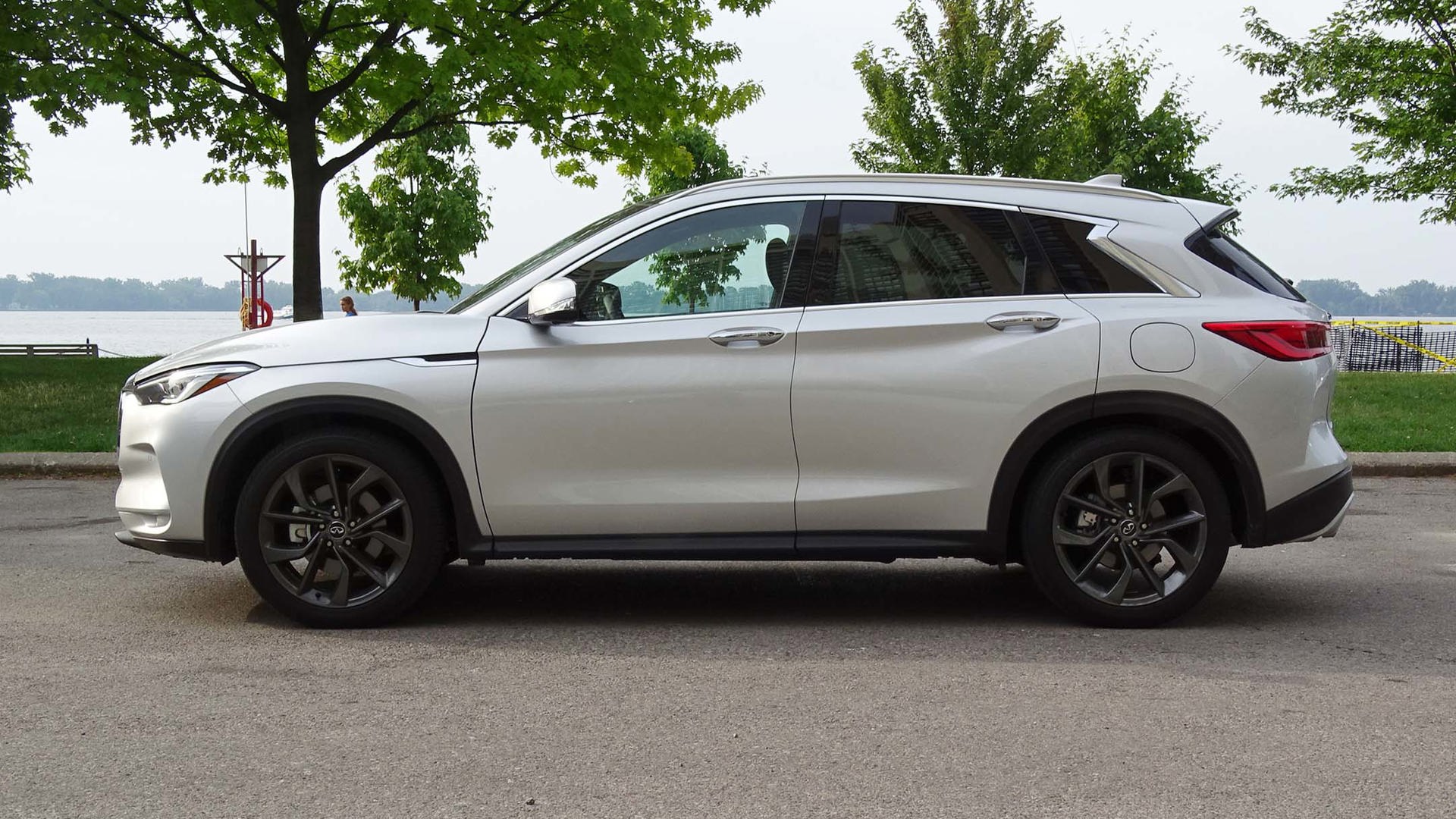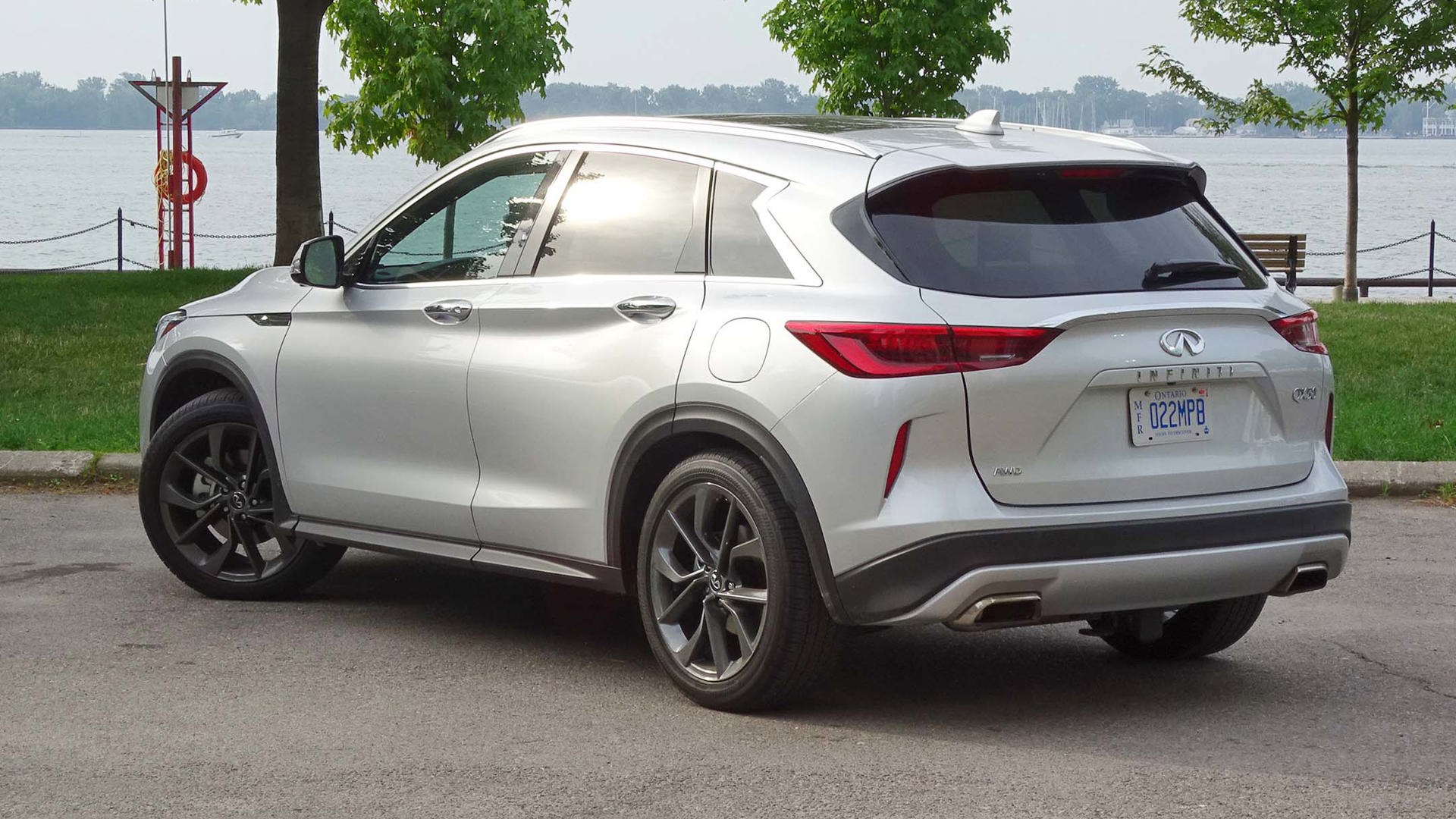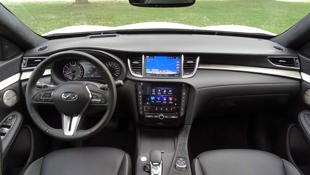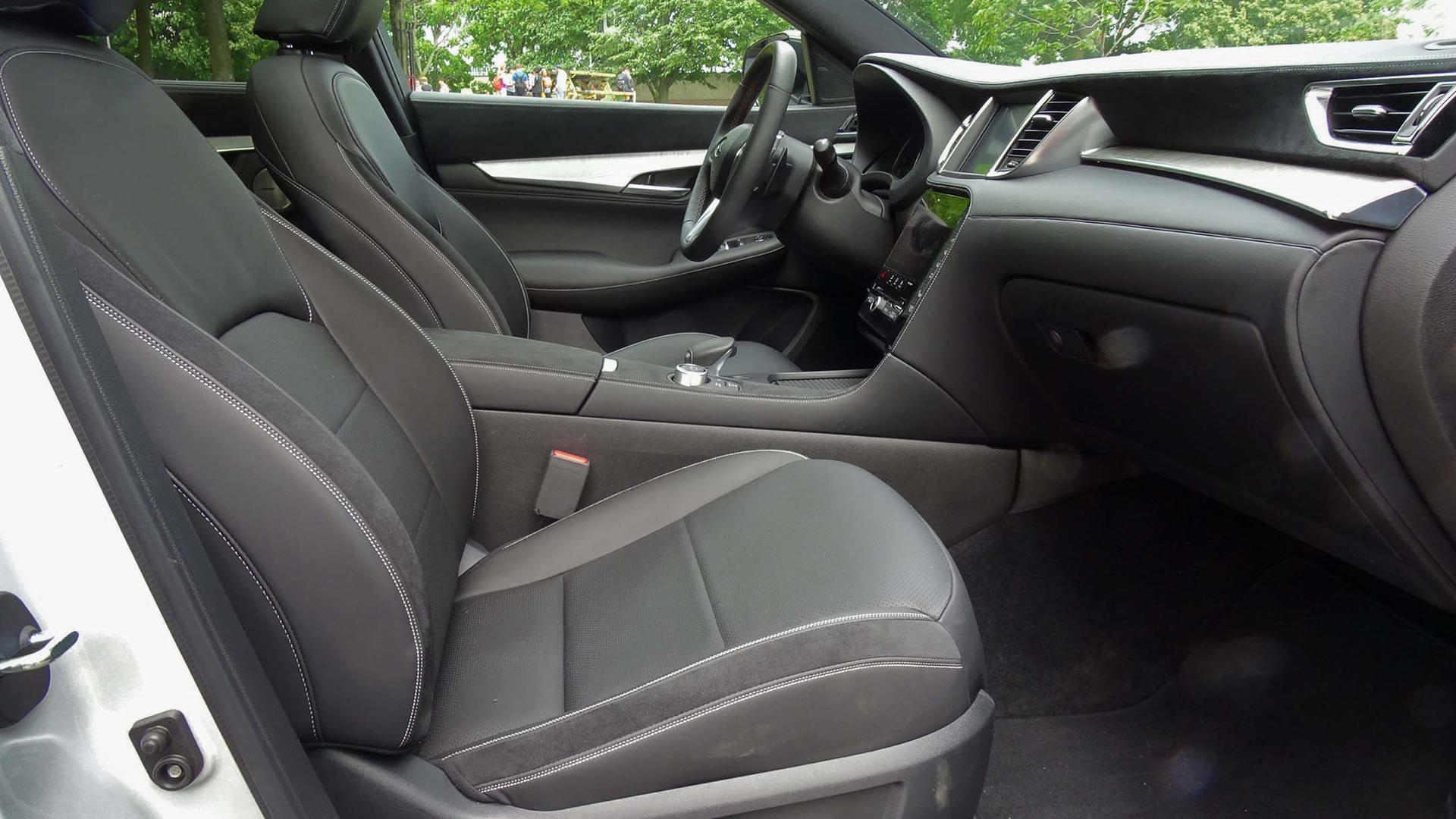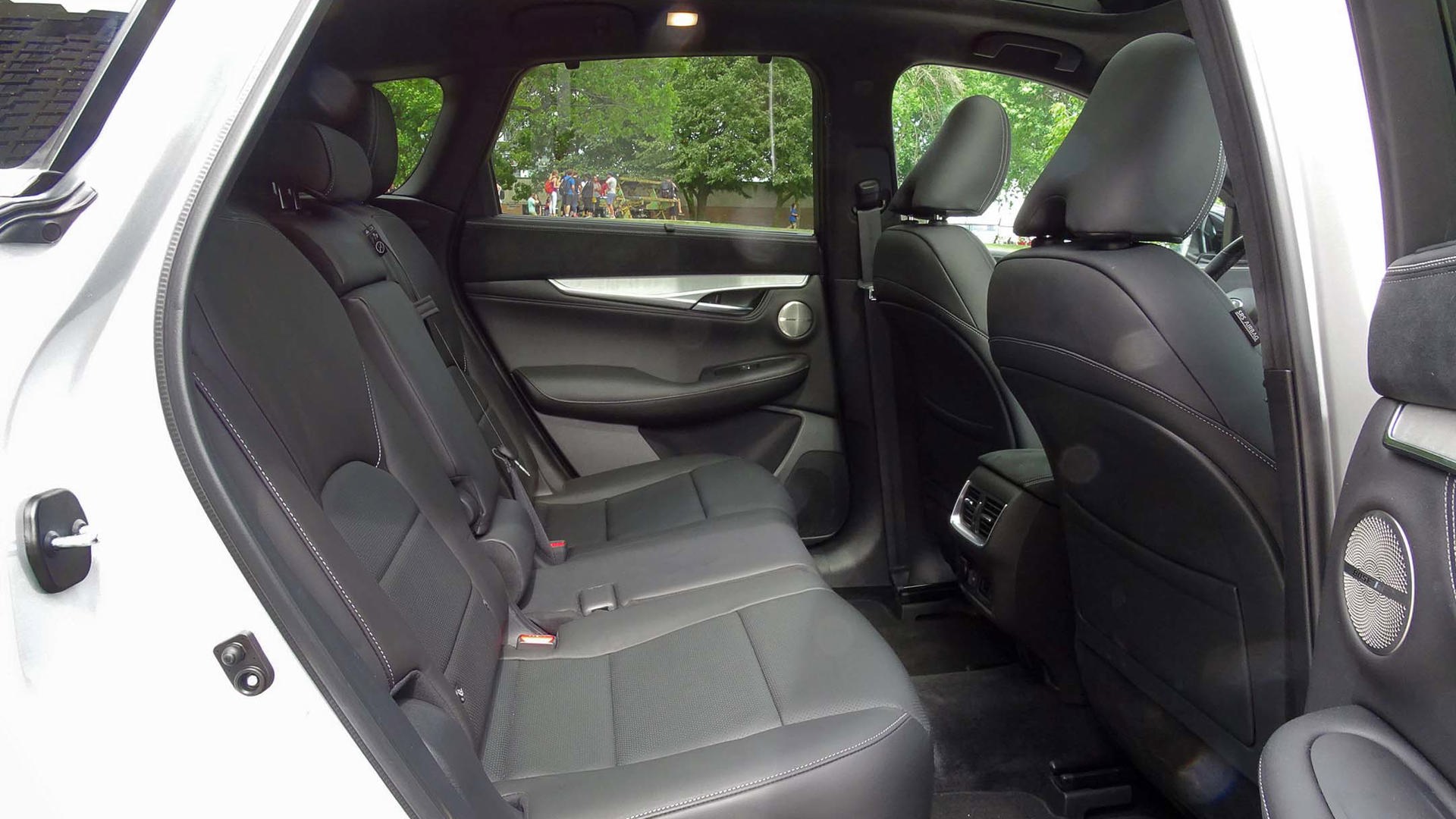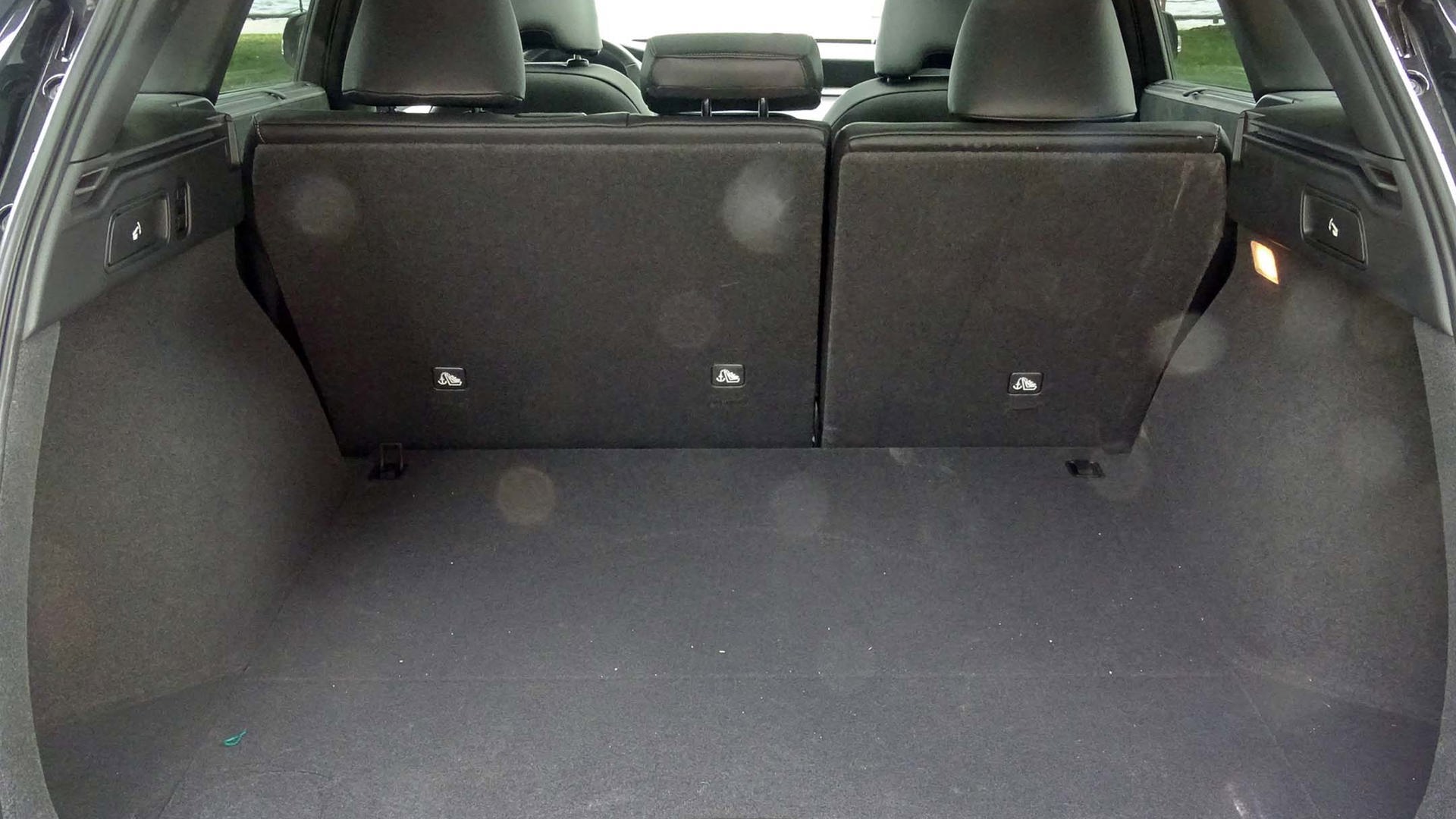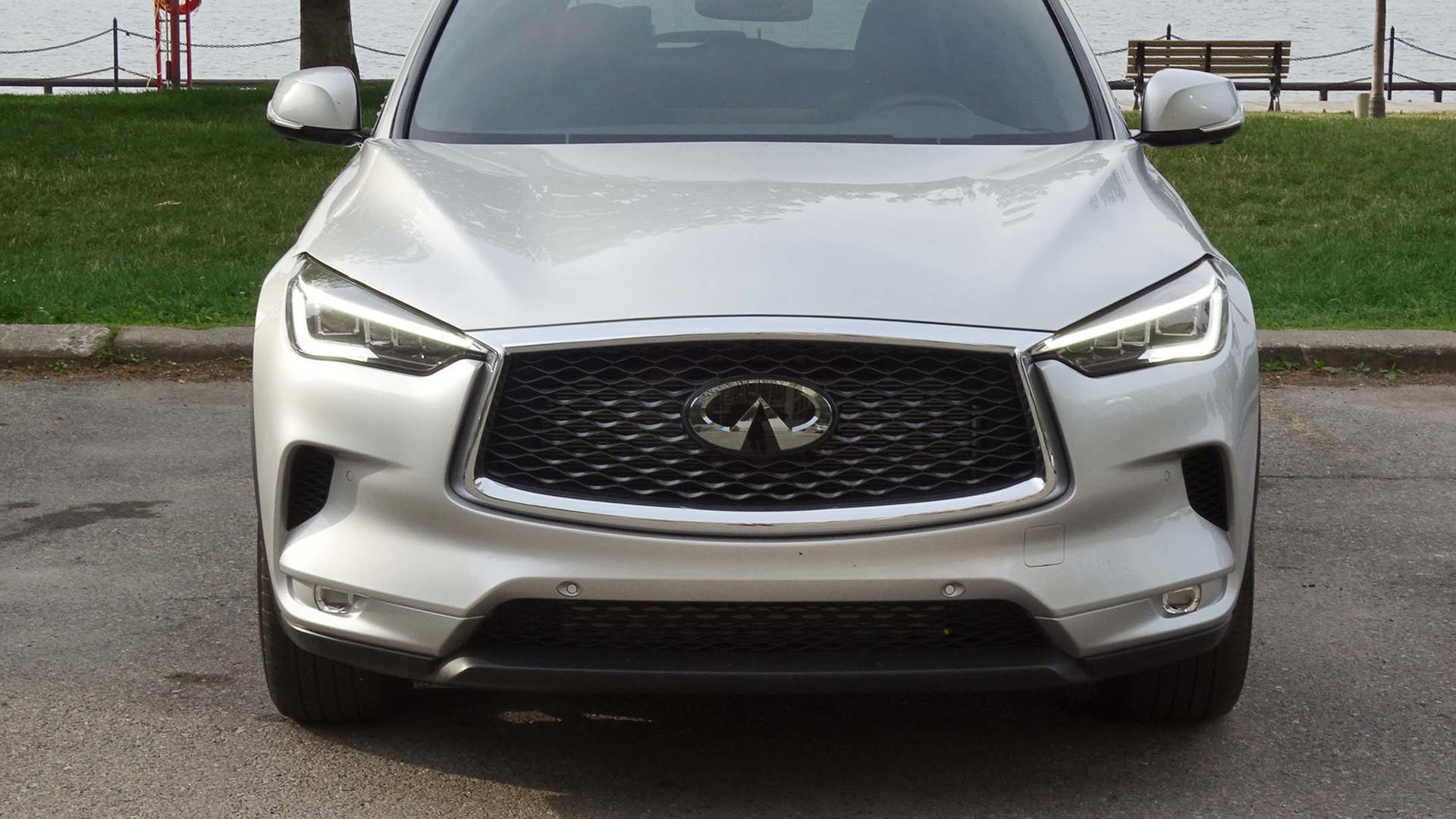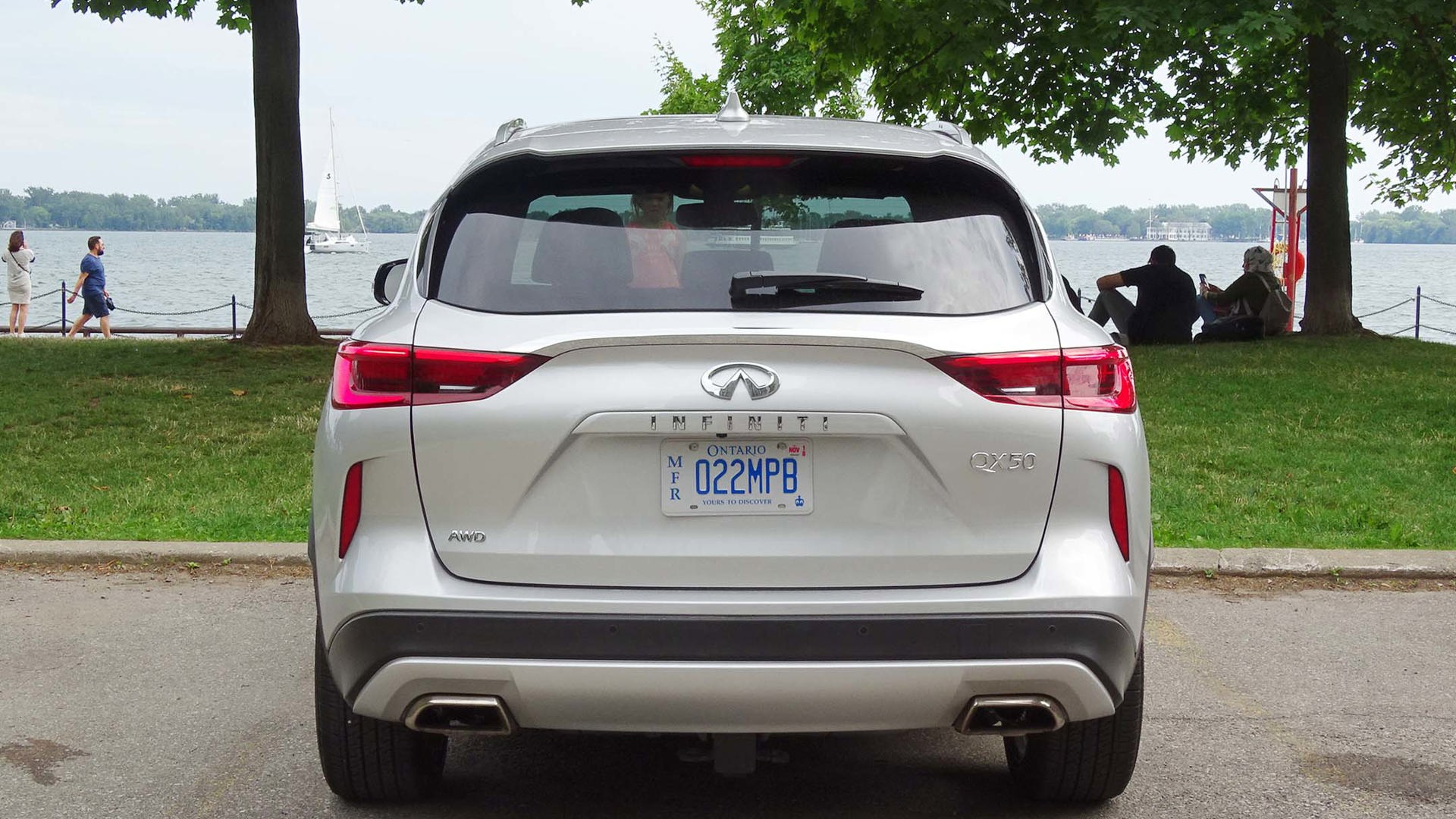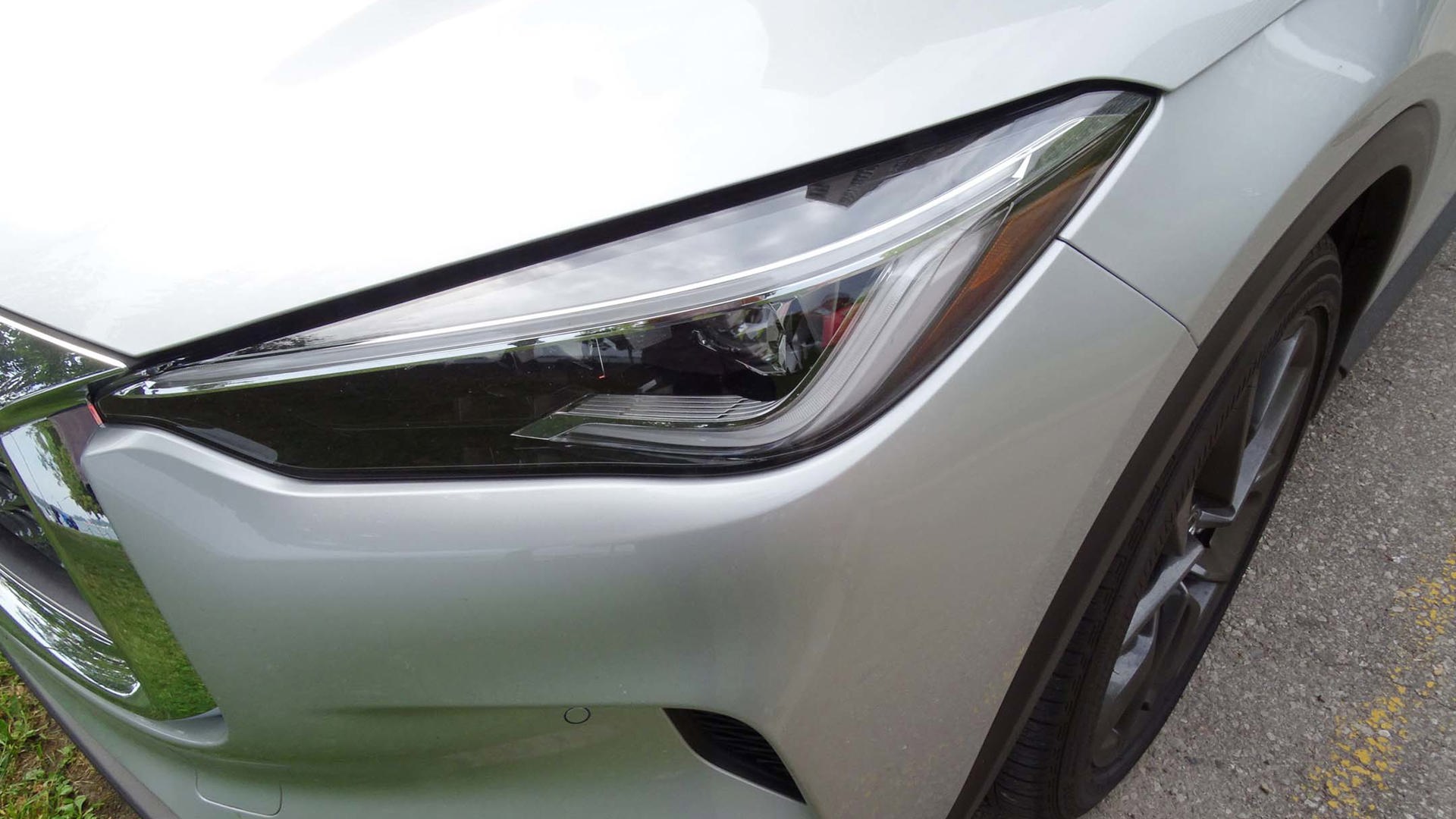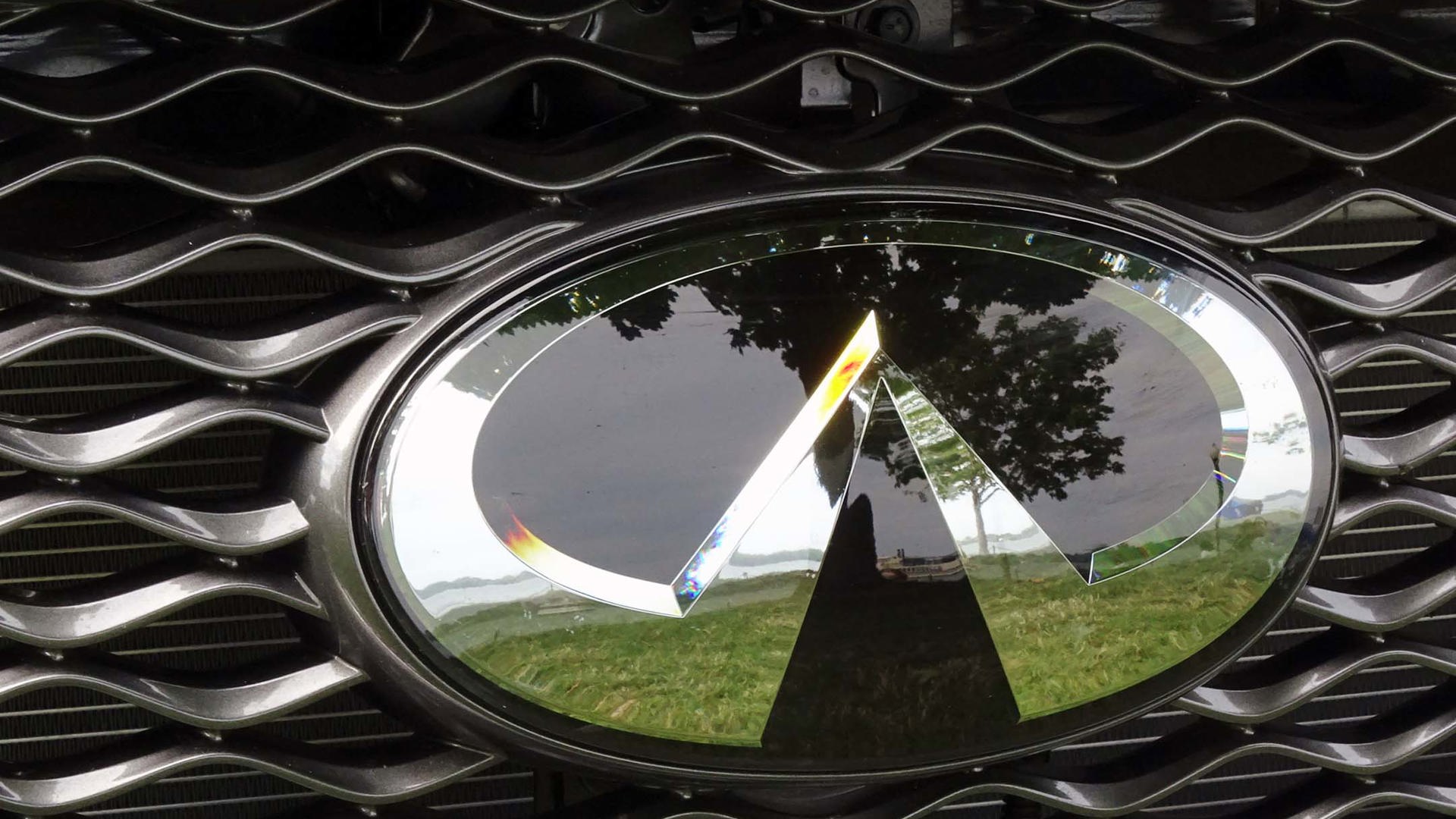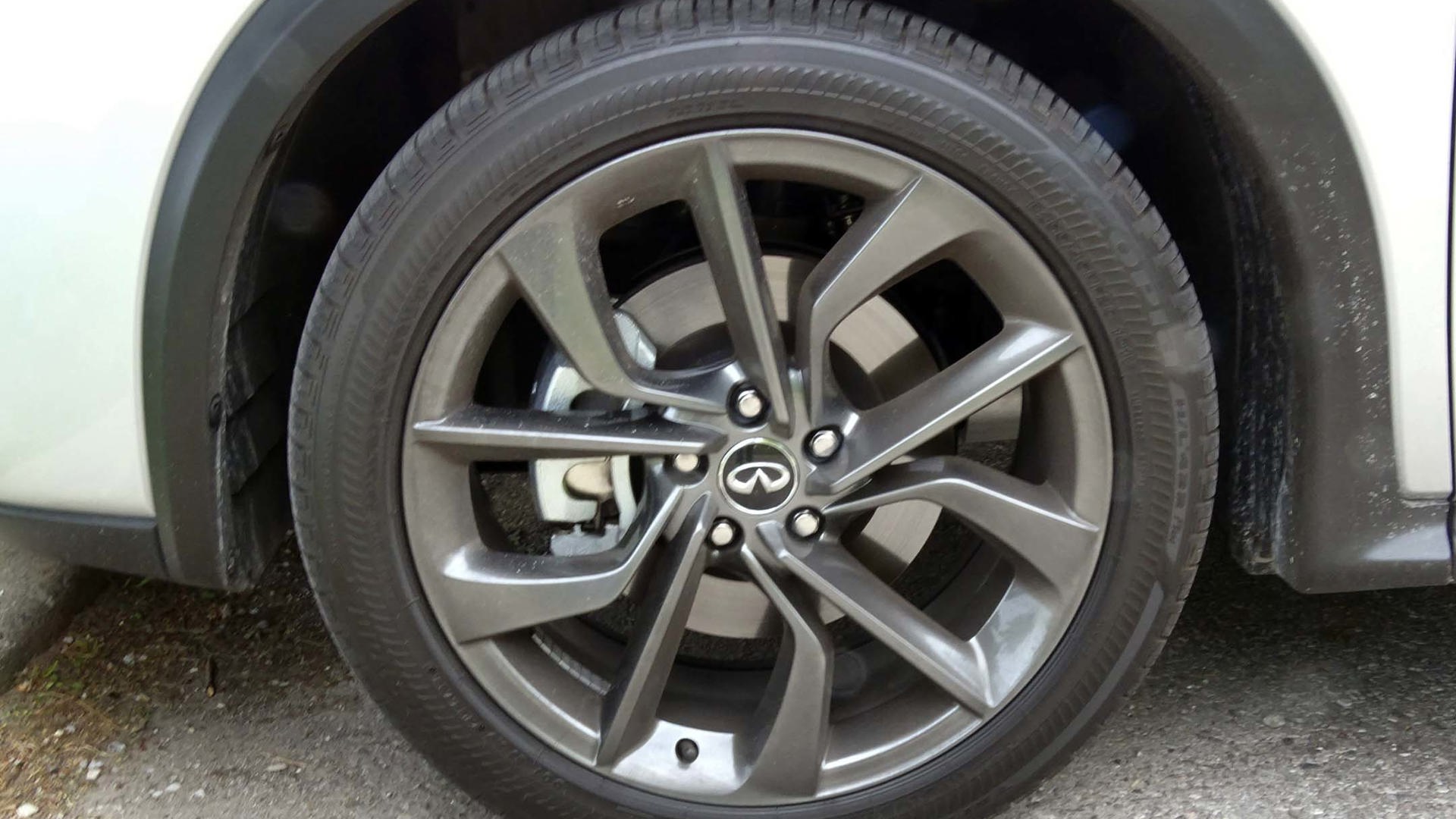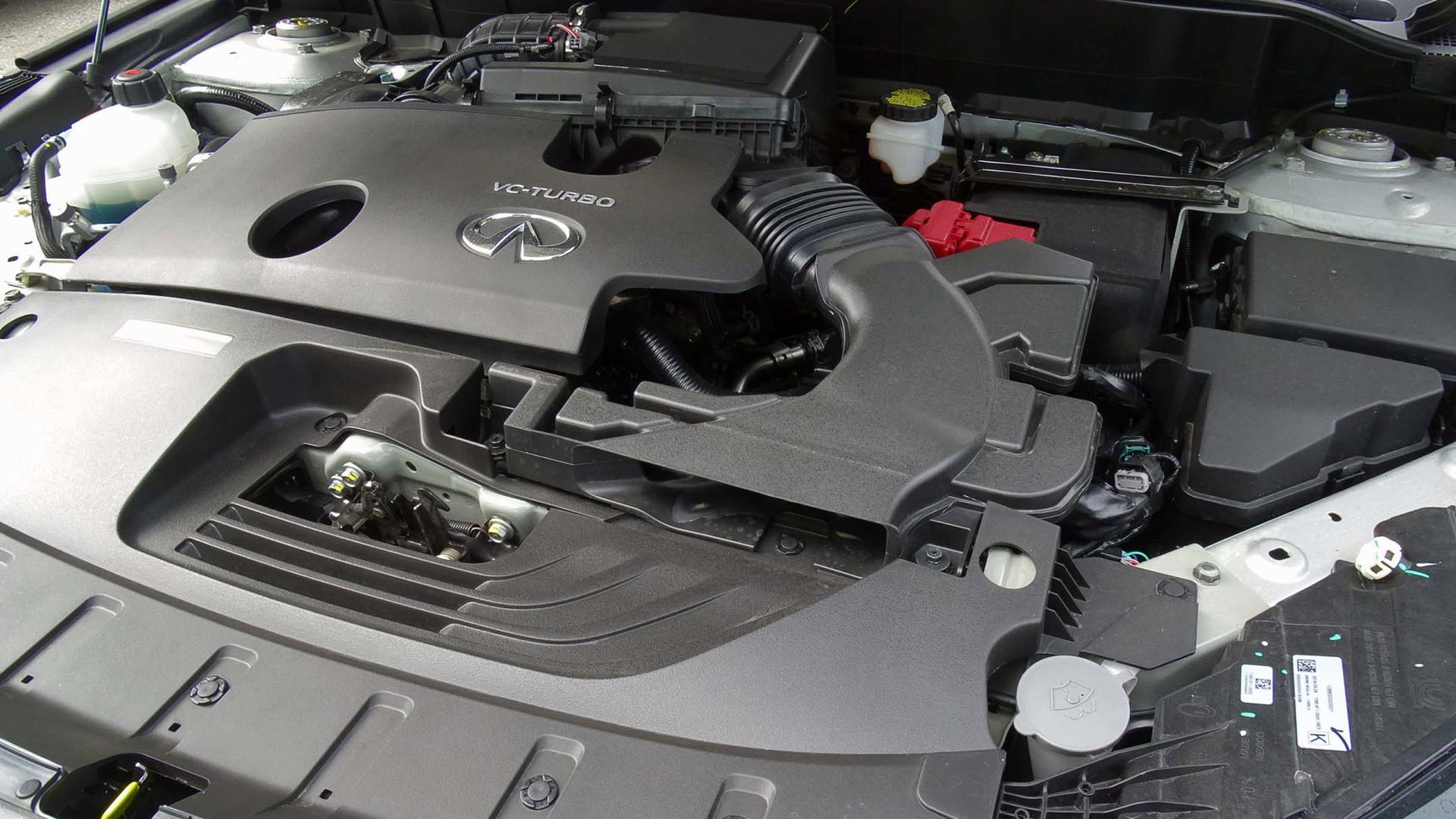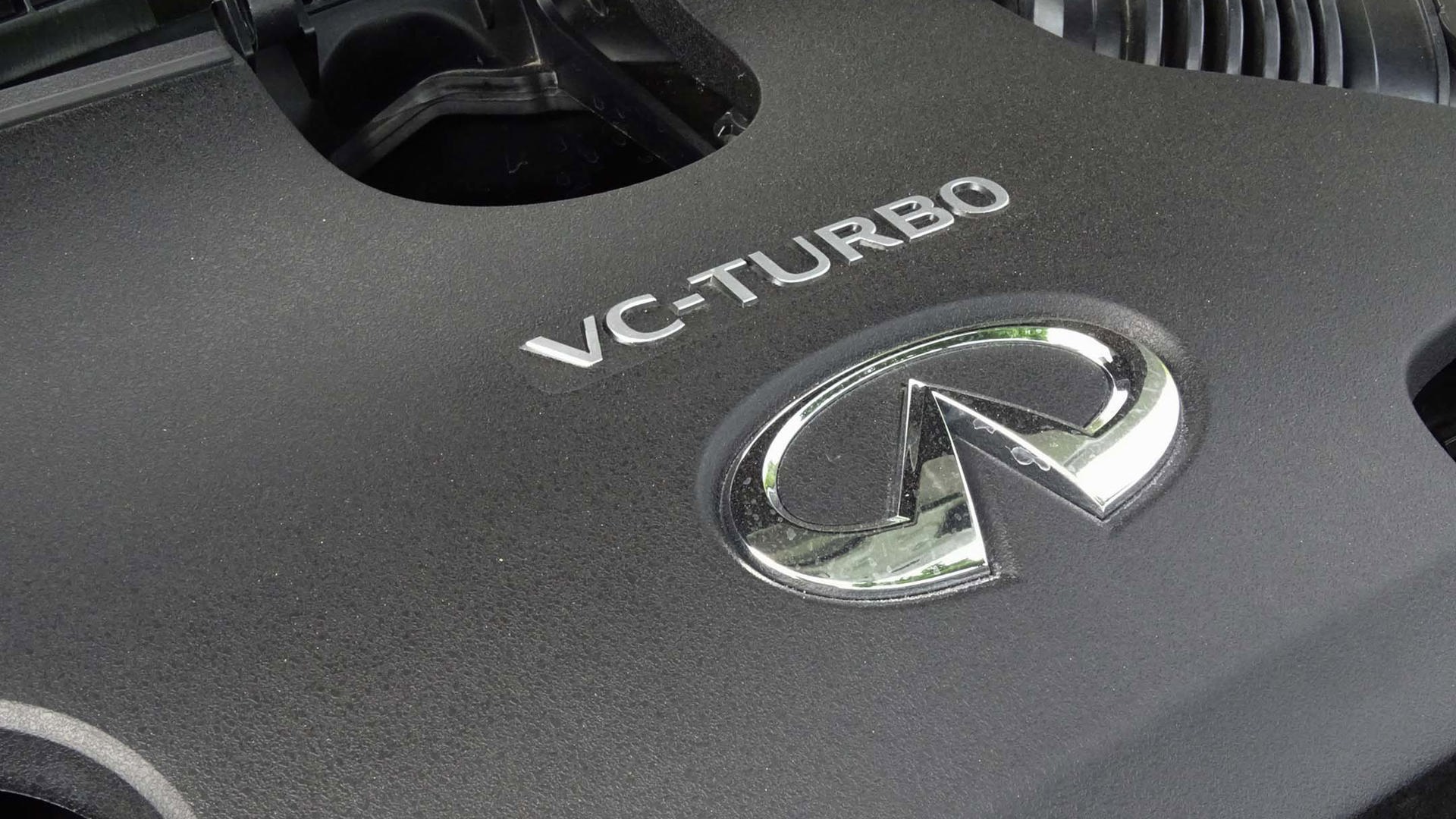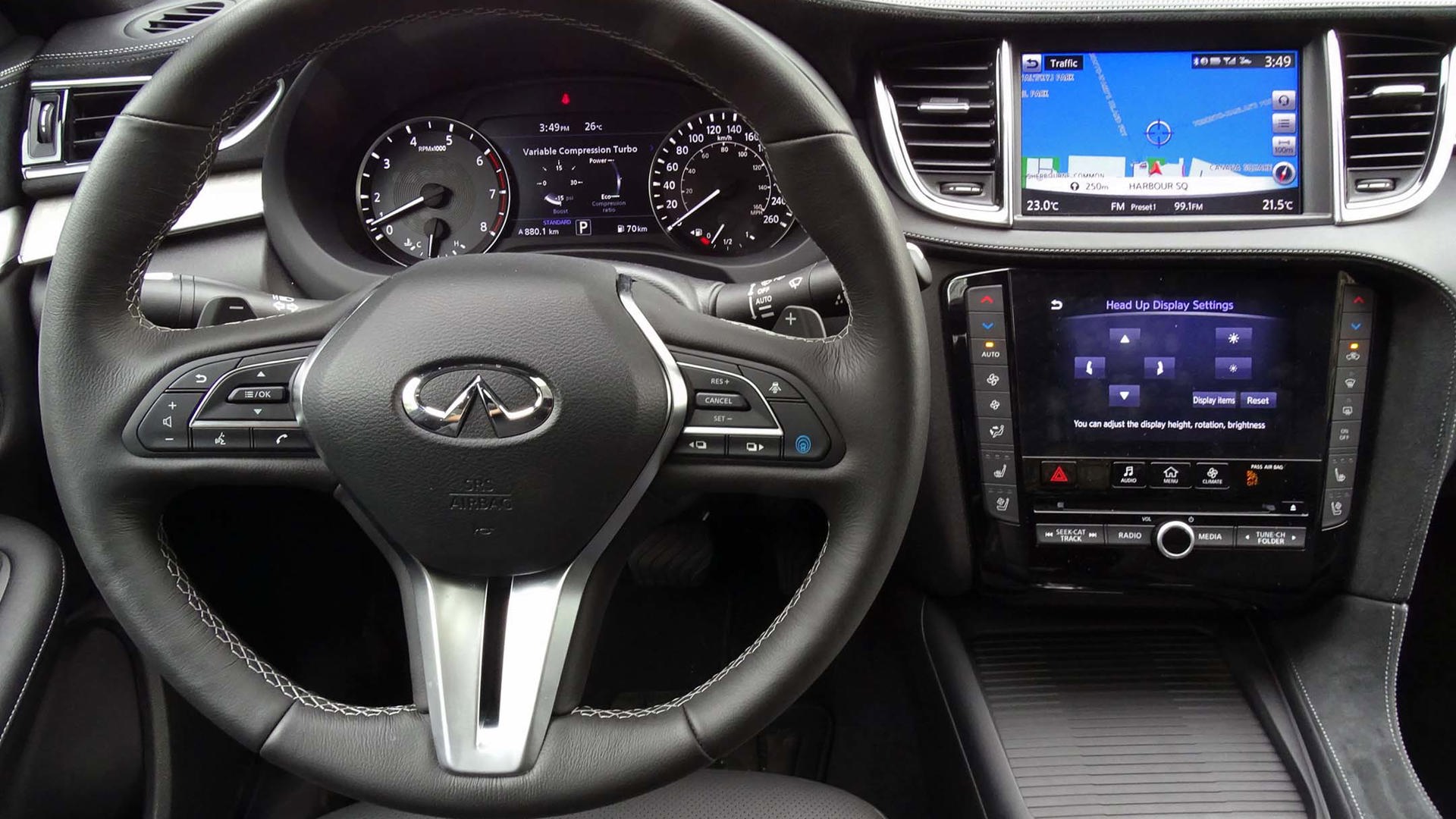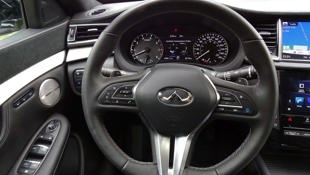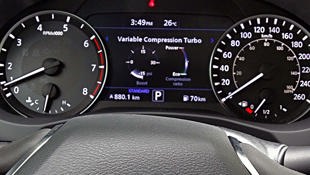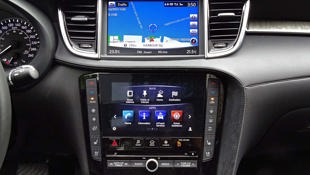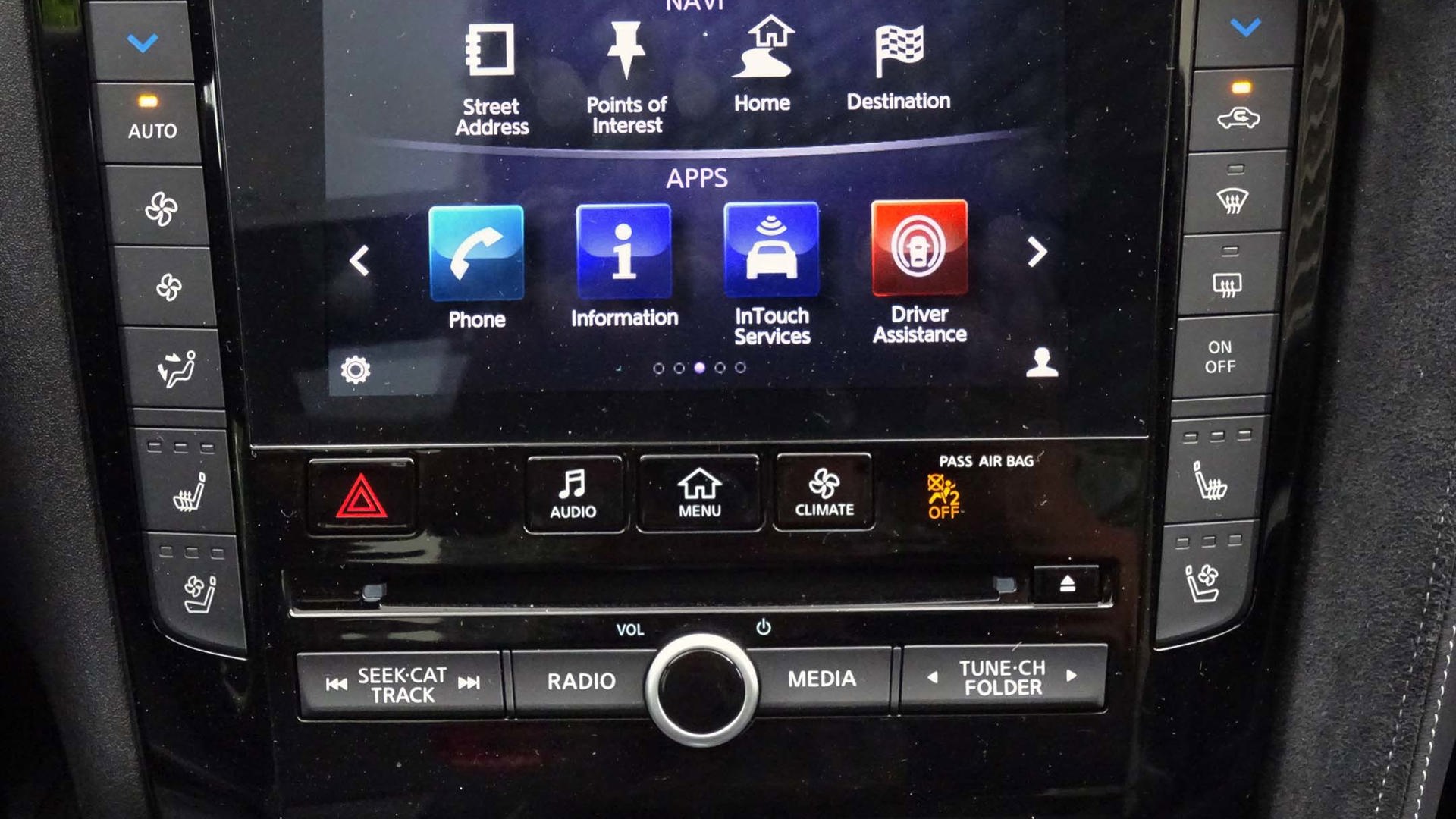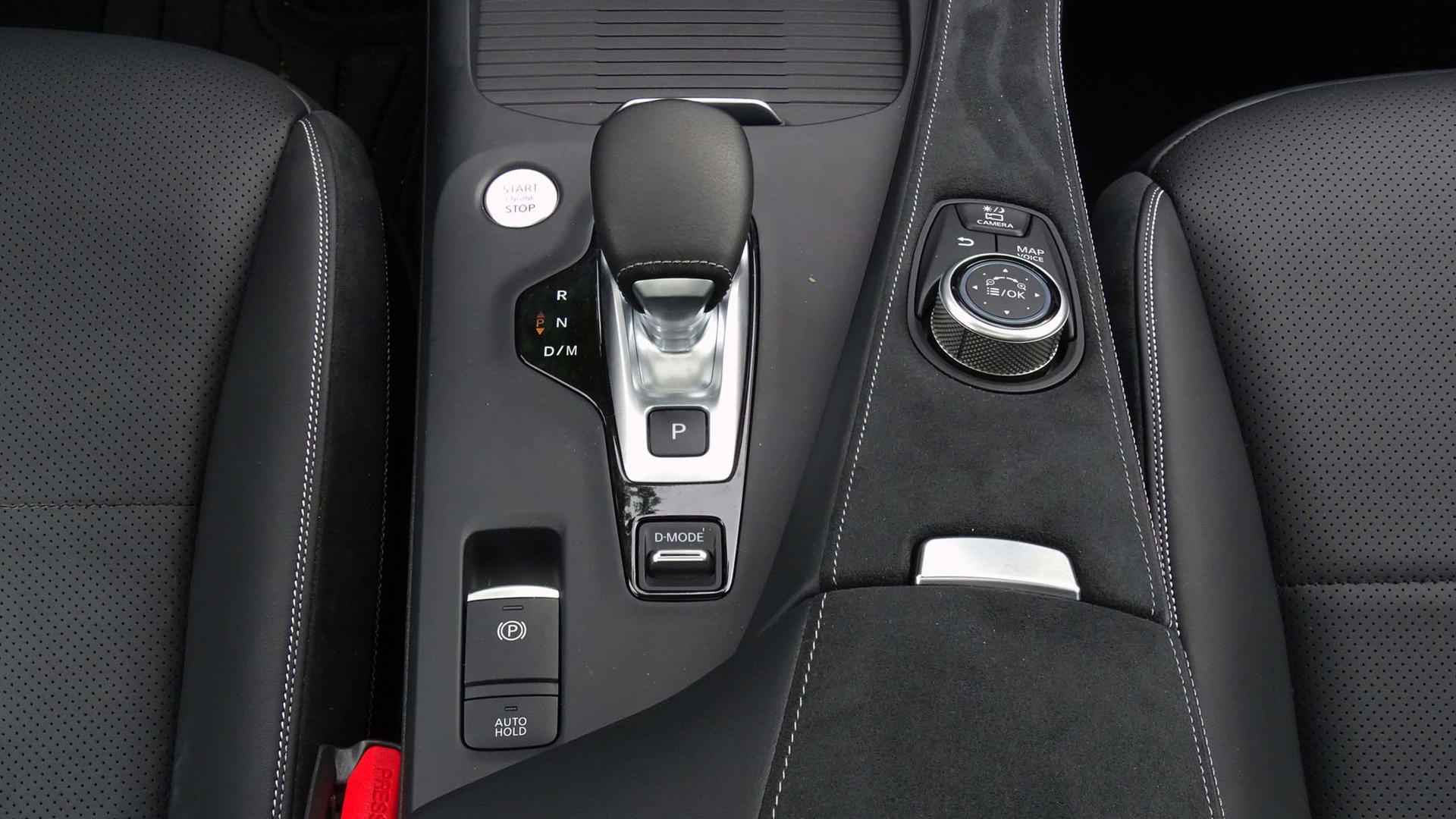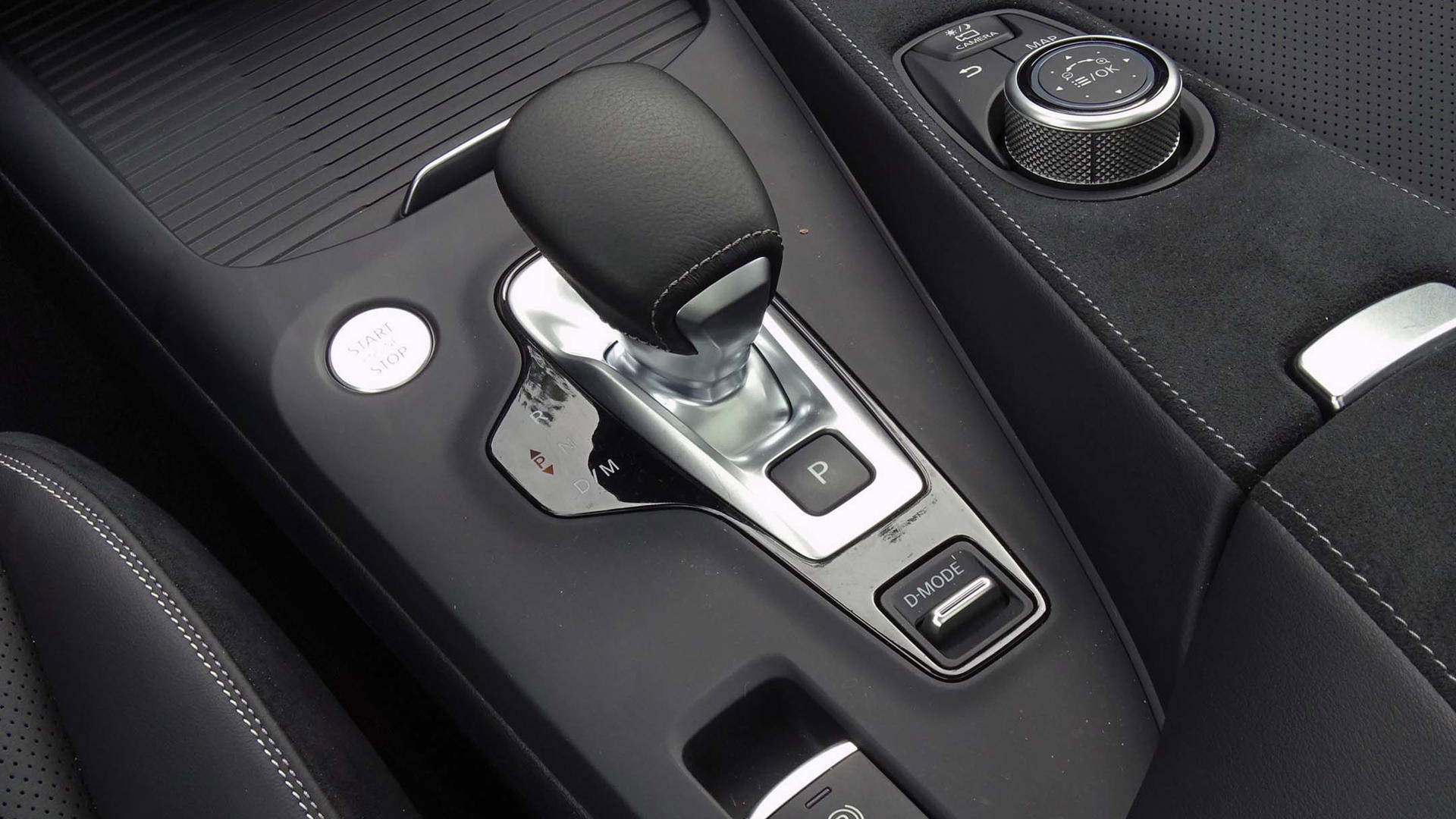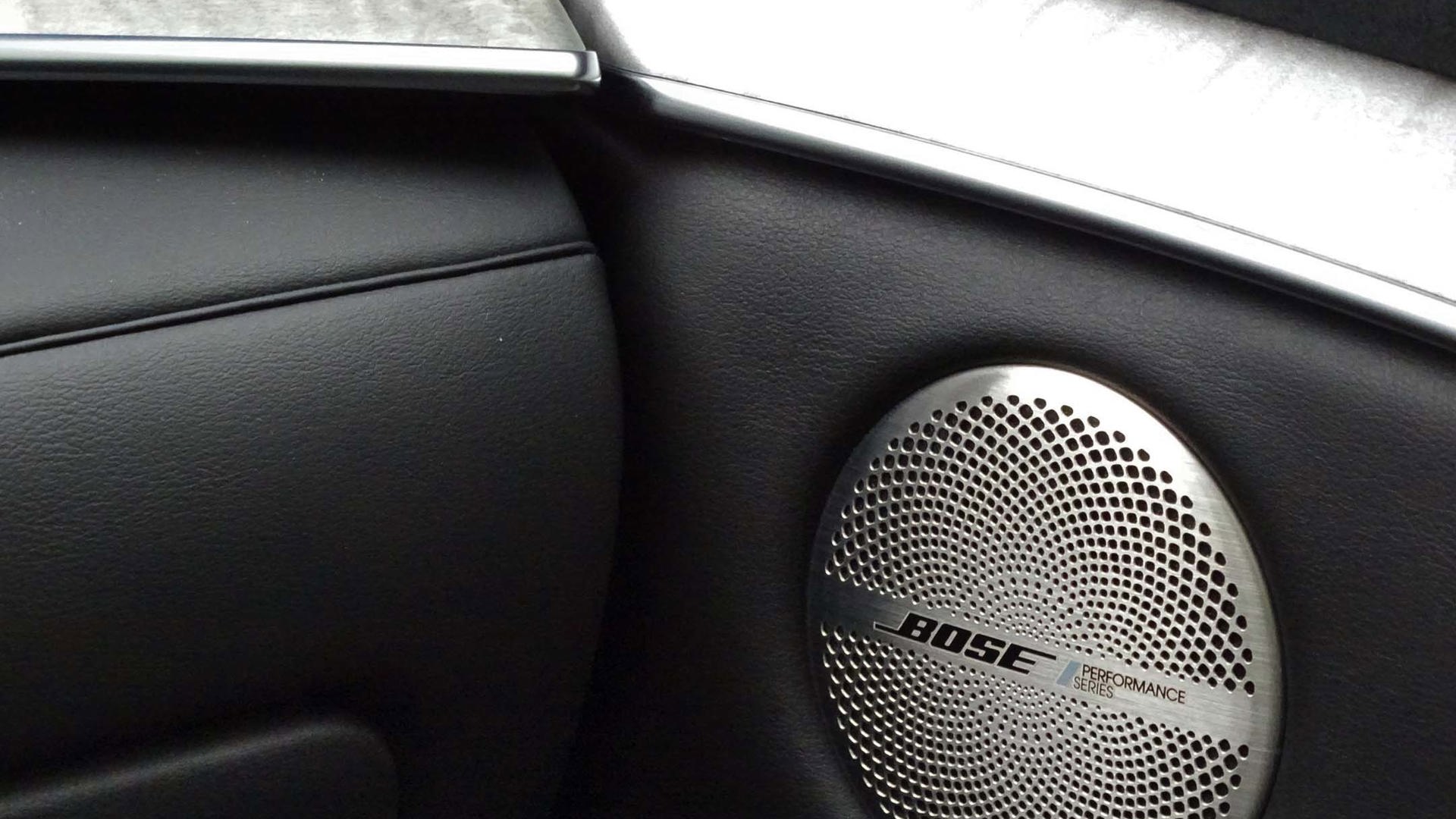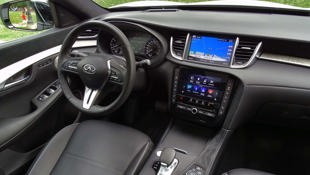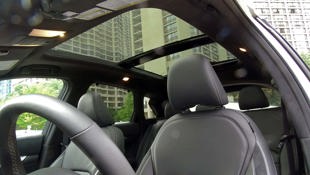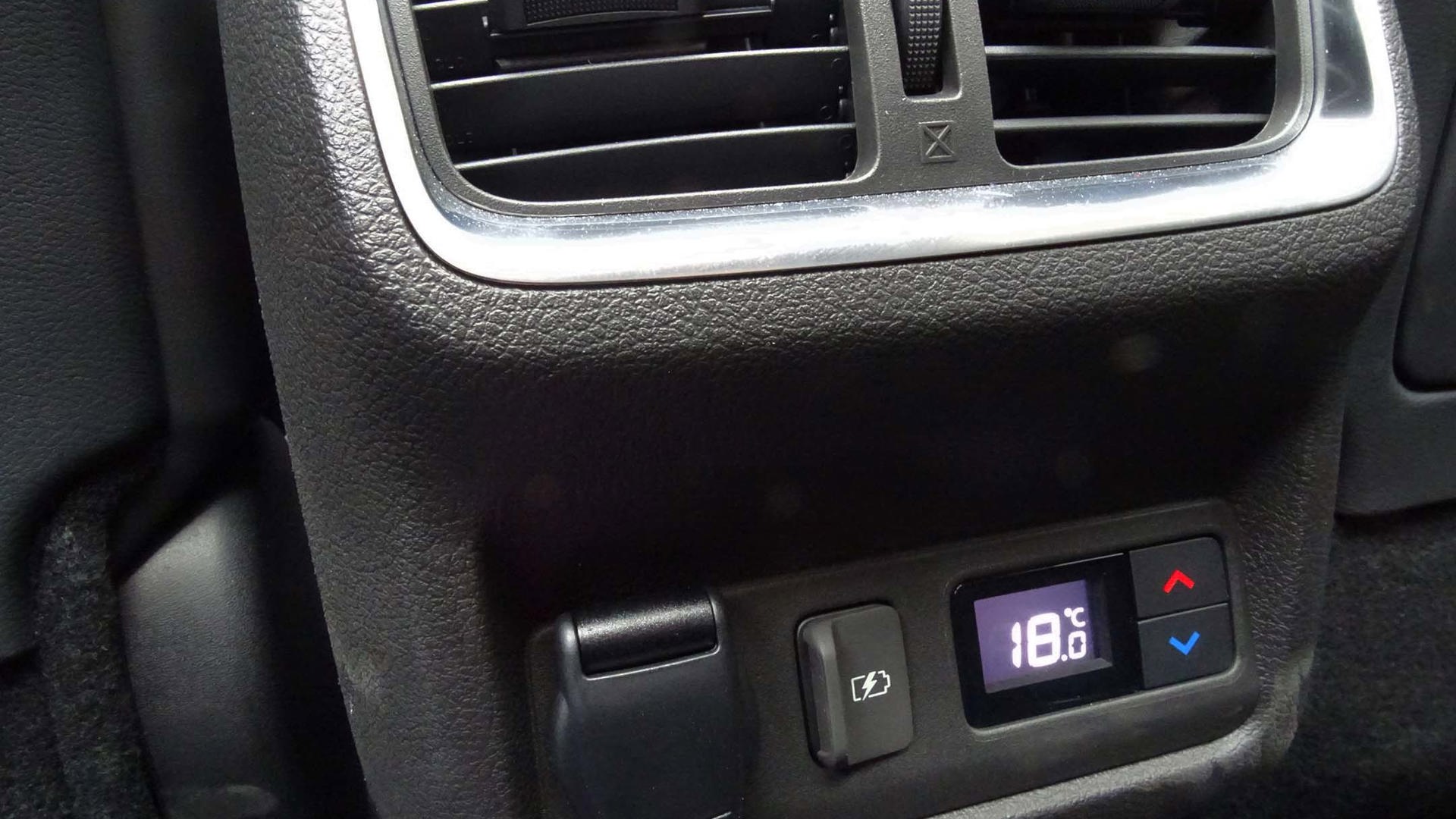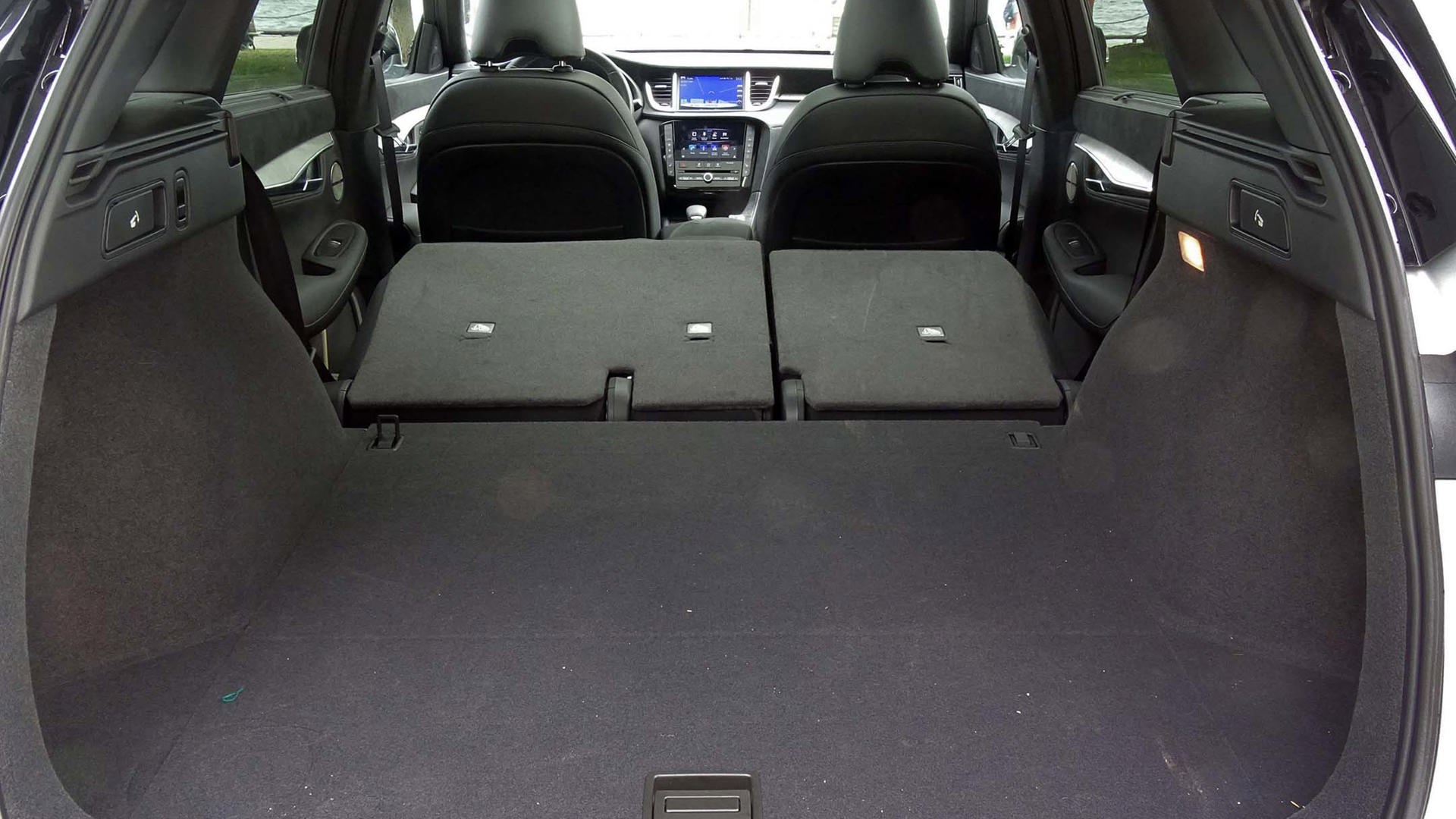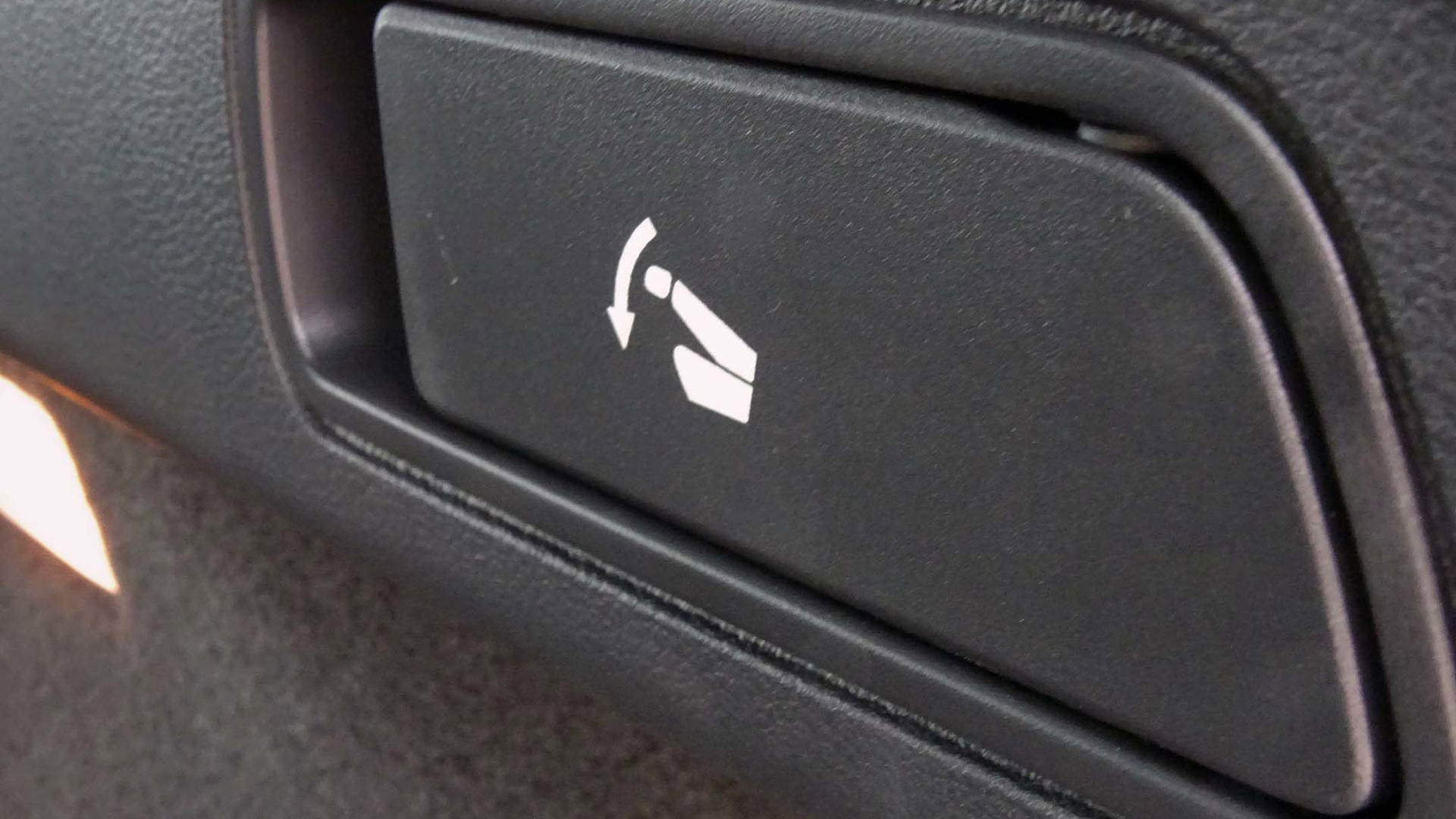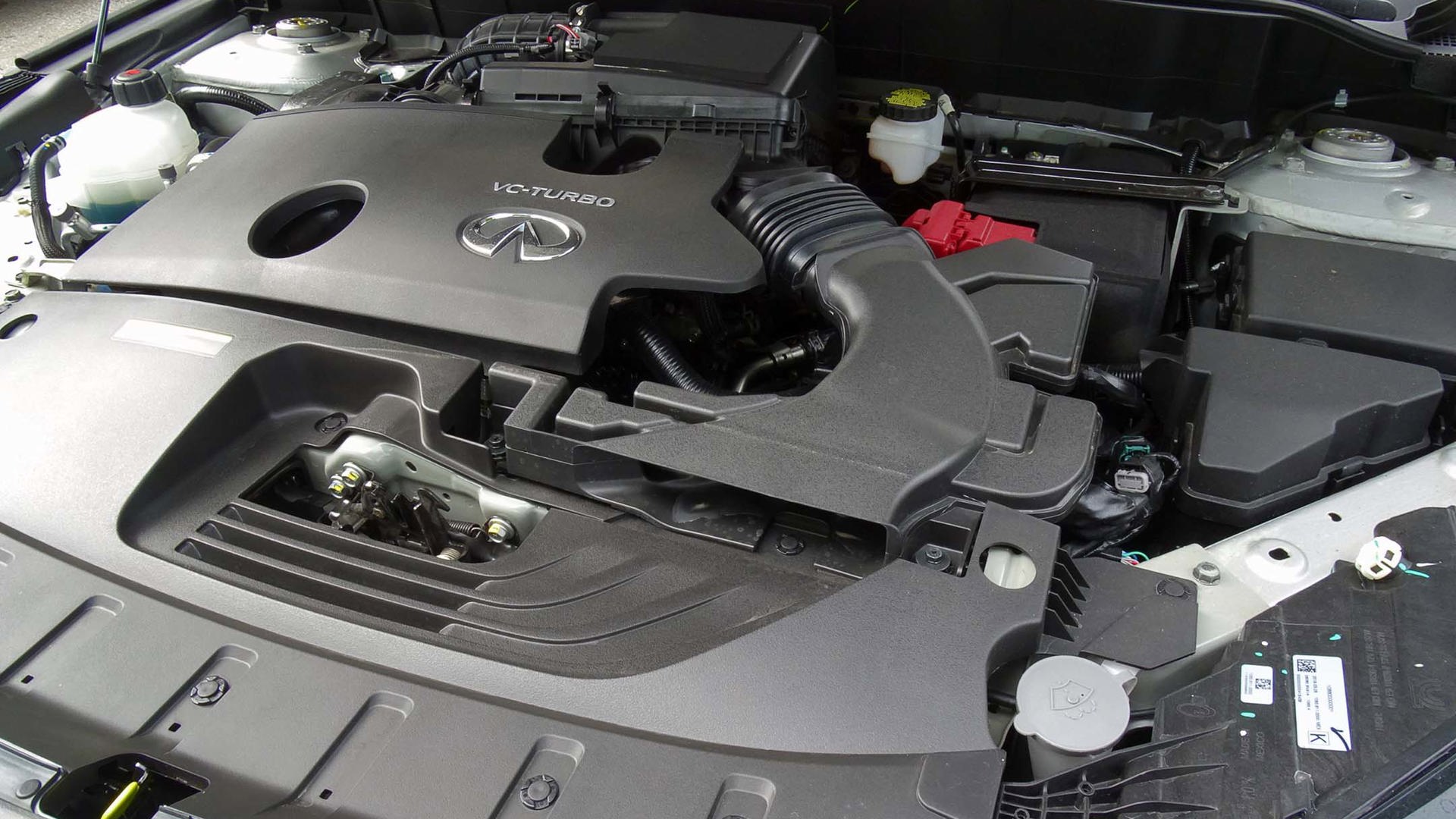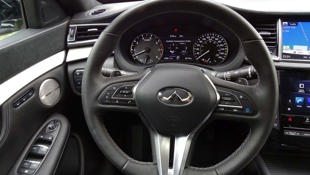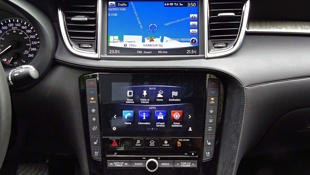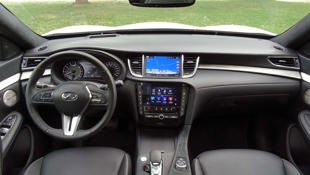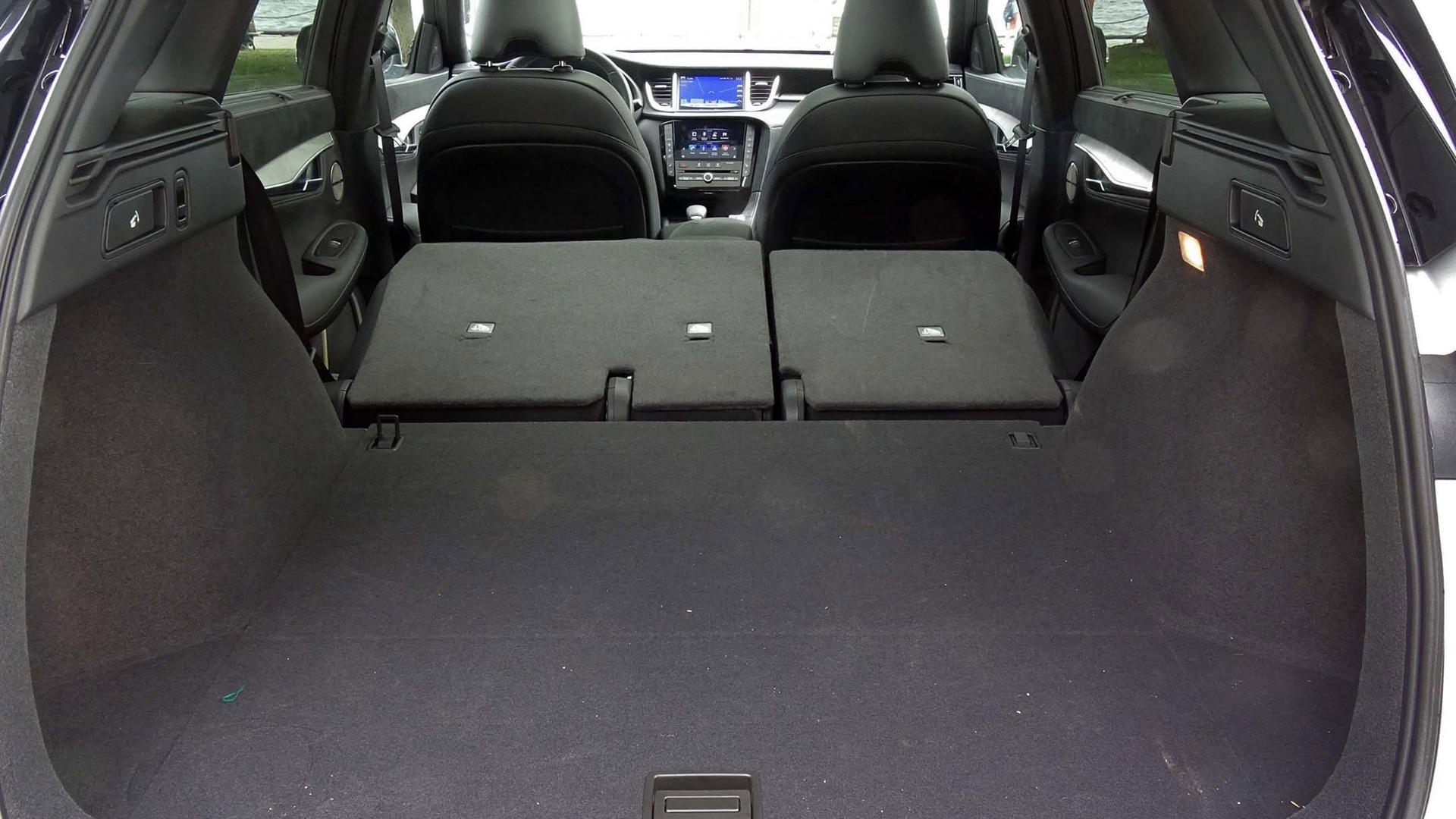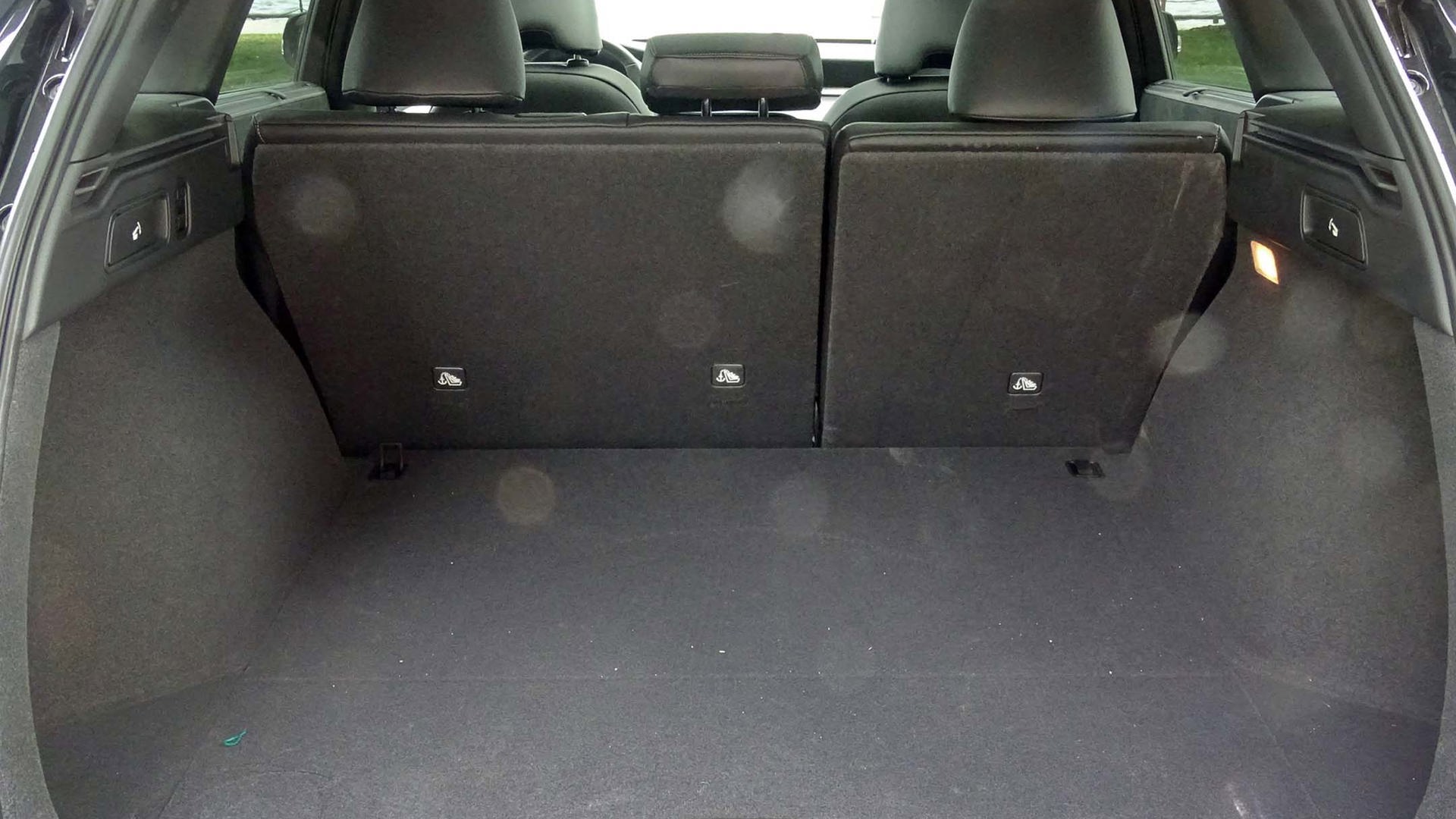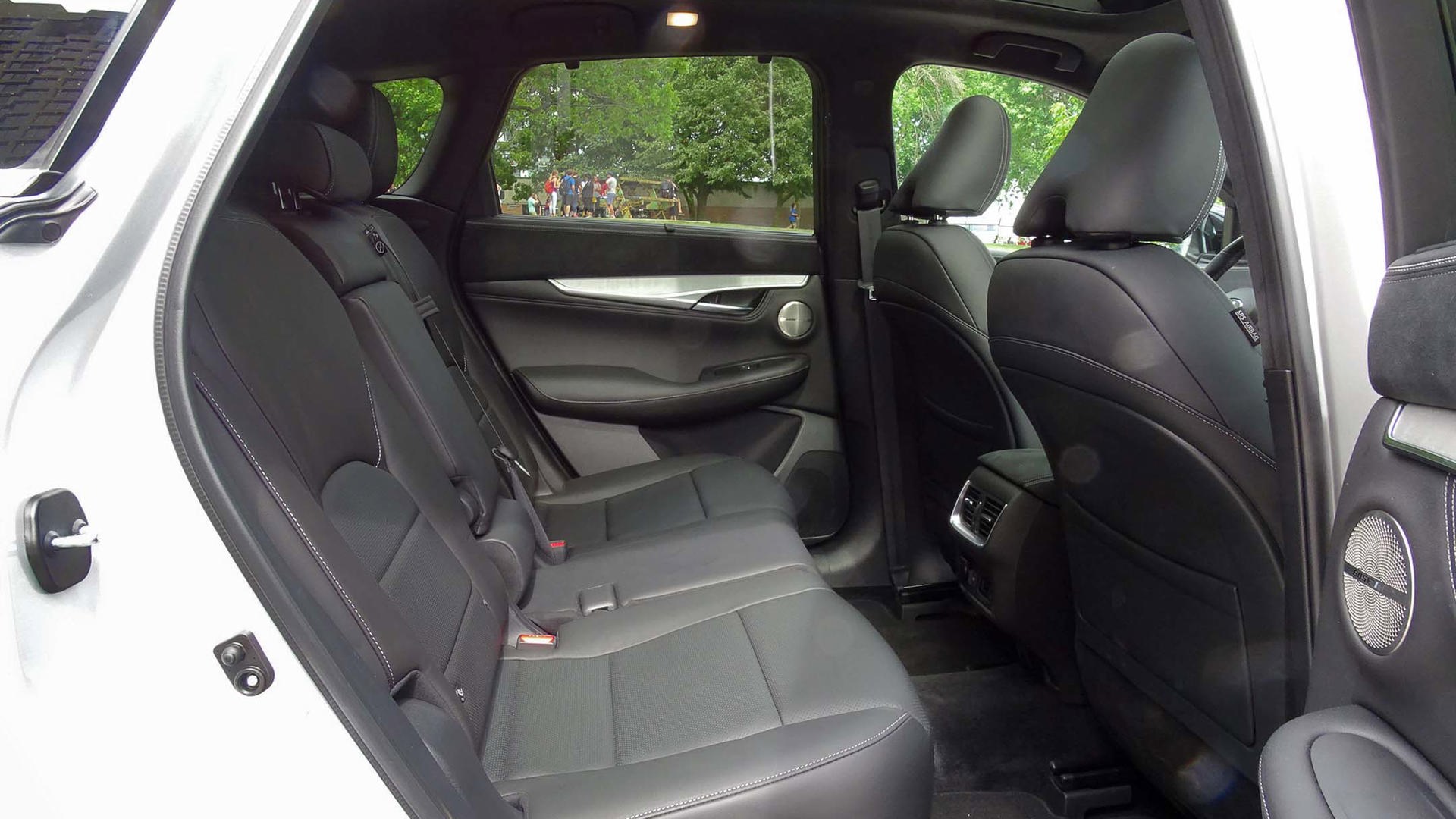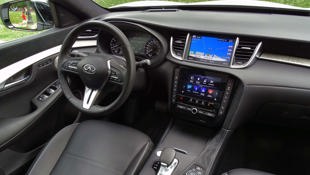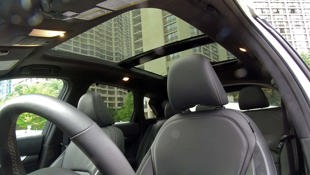 AutoTrader SCORE
AutoTrader SCORE
-
STYLING9/10
-
Safety8/10
-
PRACTICALITY8/10
-
USER-FRIENDLINESS7/10
-
FEATURES8/10
-
POWER8/10
-
COMFORT7/10
-
DRIVING FEEL8/10
-
FUEL ECONOMY7/10
-
VALUE7/10
The 2019 Infiniti QX50 is more handsome than you think at first glance. It’s the kind of subtle elegance that grows on you as time goes by. It’s also packed to the gills with high-tech features – like the Around-View Monitor (something Infiniti is proud to say they bought to market first) and the Pro Pilot Assist suite of semi-autonomous driving aids that means it will nearly drive itself.
There’s a strong thread of playfulness and performance running latent under the QX50’s exaggerated character lines.
And there’s one of the most intriguing, clever, and ambitious engine-design concepts of recent times.
The variable-compression-ratio turbo four in the QX50 is what happens when you let engineers hang out too long at the bar. It’s complex and enthralling – just watch one of the YouTube animations of how the system works if you don’t believe me.
There’s 268 hp available from the 2.0L turbocharged four-cylinder. That’s less than the 325 hp available from the outgoing 3.7L V6, but this unit’s 280 lb-ft of torque is more than the 267 lb-ft offered up by the six and comes on earlier – from as low as 1,600 rpm. It’s an eager engine, which replaces the 3.7L’s grunt with rev-happy pep.
I enjoyed the vibrant QX50 engine, but not its dance partner. The continuously variable transmission (CVT) allowed the 2.0L to spool rapidly to its 6,000 rpm redline, but felt springy when doing so. In fact, this engine spools up so fast that it would frequently hit the limiter in manual mode. And that’s a problem, because selecting manual mode in this car is far too easy to do. You pull the new electric shift wand once to select Drive and twice to select Manual. Knock it while trying to switch radio stations and bam… manual mode.
How can there be a manual mode in a CVT? The CVT is programmed to operate in a set of stepped ranges, so if you select “second” gear, you’re really just giving the CVT a range to operate in.
But again, the engine, not the shift lever, is the real hero in this story. Its variable-compression system uses a lobed connection piece between the crankshaft and the connecting rod of the piston. An electronically controlled activator moves the diamond-shaped connector, which raises or lowers the height of the piston rod. That lowers the engine displacement to 1,970 cc from 1,997 cc and increases the compression ratio from 8:1 to 14:1. The result is a sharp increase in efficiency without sacrificing power or torque.
As mentioned, this is an engine that climbs rapidly through its rev range, making it a spirited comrade in the cut-and-thrust of city traffic – even if it lacks the potent surge of the much-mourned V6. The engine’s Active Torque Rod engine mount helps reduce engine vibration and harshness by introducing its own electrically generated vibration in wavelengths that counteract those produced by the engine.
A toggle in the console triggered immature giggles from me every time I looked down, purely because it was labelled “D Mode”. That button cycles the Direct Adaptive Steering (aka drive-by-wire), the CVT’s synthesized gear ratios, throttle response, and even the variable-compression system, through various drive modes: Standard, Eco, Sport, and Personal. Sport is the only one you’ll want to be in, as it gives the best balance of firmness and ride comfort while also using the best of the variable-compression engine character. You might find it harder to hit the claimed fuel numbers if you run in Sport mode all the time though. I ended my city-heavy week on 10.2 L/100 km, slightly shy of the claimed 10.0/7.8/9.0 figures officially listed for city/highway/combined economy.
Active trace control and active engine braking help keep the QX50 composed and in check even when hustling hard to make the school pick-up deadline. Active trace control felt artificial and intrusive in previous iterations but Infiniti has filtered the system and tuned it to get rid of that sensation. Now, the systems work seamlessly to hide the effects of your overeager on-ramp assaults. The steering is light and over-boosted, but the chassis responds well to steering inputs and rides mid-corner bumps well. It particularly shines in minimizing rebound bounce after larger bumps like the frost heaves found throughout our nation’s highway systems.
Your daily grind is supported by Infiniti’s Zero Gravity seats, whose quilted leather sets off a cabin that looks and feels brilliant at first glance. The grey suede and porous wood accents in this cabin were eye-catching, and there is a blue-on-white interior also available with this car that looks incredible. That’s the colour palette I’d go with given the chance.
Underneath the suede though, there is a thin veneer of padding and then hard surface. The suede accents look wonderful, but don’t quite live up to expectations when you’re resting your elbow on the centre console armrest.
The centre stack is dominated by two screens which give access to automatic climate control, and the controls for the excellent 15-speaker Bose system. A full-colour, seven-inch display in the instrument cluster displays trip and fuel economy information, as well as the status of the numerous driving aids and safety aids onboard the QX50. It even shows the current state of the variable-compression system as it runs. All to make sure the tech features of the car are front of mind for the driver, at all times.
Standard on the Sensory trim, and available elsewhere as the $4,000 ProActive package, you get back-up collision intervention, park-distance assist, rear cross-traffic alert, steering assist, intelligent cruise control with full speed range and hold, blind-spot intervention, lane-departure warning and prevention, high-beam assist, head-up display, direct adaptive steering, and easy park assist – which delivers an ultra-light steering effort at low speed.
That tech focus makes the decision to not offer Android Auto and Apple CarPlay all the more confusing. Both Infiniti/Nissan and Mazda remain holdouts in this area, for reasons I cannot at all understand. It’s a major downfall when you consider the youth target market. These features are of great importance to that crowd.
Other “Sensory” touches include the 20-inch dark wheels, premium leather, climate-control seats, motion-sensor tailgate, rear window shades, adaptive LED headlights, black Ultrasuede interior trim, natural maple wood trim, and metallic cargo area finishes.
That cargo area, by the way, is far larger than I expected it to be. Visually, it looked massive, and the official figures supported my eye test. There are 880 L available with the seats all upright and pushed back, that’s more than an Acura RDX, Audi Q5, or BMW X5, and far more than a Lexus NX300.
Slide those seats forward and you’ll get 1,048 L, or fold them down and open up 1,822. Again, larger than the quartet above. That extra space comes courtesy of height and width. At 1,676 mm tall it is one of the tallest luxury compact SUVs on the market, and it’s 2,160 mm width is nearly a foot wider than the BMW X3. Its relatively short 4,691 length makes for a more athletic, stocky appearance that only adds to the QX50’s aesthetic allure.
In fact, its exterior design, with the clamshell hood, short overhangs, and wide stance, tricked me into applying a sporty lens to this car. In much the same way the BMW X3 has the attitude and air of a sporty SUV, the QX50 gives the impression of performance.
That impression is damped a little by the CVT’s noise, and the over-boosted steering, but at its heart the QX50 has a playful spirit. And therein lies the confusion.
This is Infiniti’s second-tier luxury SUV. A step up size- and quality-wise from the QX30, and yet more accessible both literally and figuratively than the larger QX60. Its mission is to capture the rising tide of compact luxury SUV buyers; most of whom want something easy to drive, nice to look at, and pleasant-feeling.
The 2019 Infiniti QX50 hits those marks with ProPilot Assist, handsome design, and strong on-road manners. But it’s almost as if the engineers couldn’t help themselves when tuning some performance character into the car. I wouldn’t be surprised to see a “Red Sport” edition in the QX50’s future.
There’s a strong thread of playfulness and performance running latent under the QX50’s exaggerated character lines. It’s a technical showpiece that still has unexplored potential.
| Engine Displacement | 2.0L |
|---|---|
| Engine Cylinders | I4 |
| Peak Horsepower | 268 hp @ 5,600 rpm |
| Peak Torque | 280 lb-ft @ 1,600–4,800 rpm |
| Fuel Economy | 10.0/7.8/9.0 L/100 km cty/hwy/cmb |
| Cargo Space | 880 / 1,048 / 1,822 L seats back/forward/folded |
| Model Tested | 2019 Infiniti QX50 Sensory |
| Base Price | $56,490 |
| A/C Tax | $100 |
| Destination Fee | $2,045 |
| Price as Tested | $59,285 |
|
Optional Equipment
$650 – Metallic Paint $650
|
|

